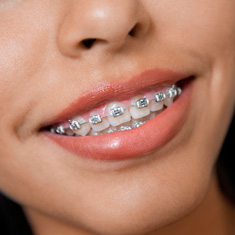Treating Cavities
Dental cavities, also referred to as caries, are holes in teeth caused by bacteria. There is a higher risk in developing cavities when foods high in sugar or starch are consumed. Bacteria combines with food particle and salvia to create acids that destroy the enamel and structure of the teeth. Bacteria can also erode away gum tissue causing periodontal (gum) disease. Tooth decay and cavities form as the acid from bacteria remain unclean on the teeth for longer periods of time.
Located in Firestone, CO, Dr. Mathew Brady and Dr. Naomi Lane help prevent tooth decay and cavities in children with prevention and educational training efforts. If a cavity does develop, we will recommend the procedure specific to your child's case. Most cases require a simple filling to prevent further decay and relieve any pain and discomfort your child may be experiencing.
How does a cavity form?
Both good and bad bacteria live in your mouth. The harmful bacteria will combine with the foods you eat, especially sugar and starches, to create acids that dissolve and destroy teeth and gum tissue. As bacteria combine with food and saliva, it forms a sticky substance called plaque. Plaque will develop only 20 minutes after eating. As plaque remains on the teeth and gums, it becomes a more hardened and sticky substance. If plaque remains on the teeth for more than a few days it turns into tartar or calculus, which is very hard to remove with normal over-the-counter oral remedies. As plaque and tartar remain on the teeth, they can form holes in the tooth's enamel often causing sensitivity and pain. This is how a cavity is formed.
The parts of teeth that are most vulnerable to the development of cavities are in the pits and pockets of your teeth where plaque can easily settle. This is most often the top of the teeth. However, plaque can also easily build up between the teeth and next to the gum line. As a cavity grows deeper, it eventually penetrates into the softer inner layer of the tooth known as the dentin. This is when pain and discomfort will be experienced.
Who is at risk of cavities?
Everyone who puts food into their mouth is at risk for developing cavities. Cavities can develop on a child as soon as their first tooth appears. Our saliva acts as a natural barrier and helps prevent plaque from remaining on our teeth. However, our saliva cannot work as fast as we consume foods, and additional cleaning is needed.
Genetic factors may affect your child's risk of developing cavities. A low salivary flow or dry mouth can increase the risk of developing cavities. Also, tooth size, shape, position and thickness of enamel can increase risk.
Treatments of Cavities
The most common procedure to treat cavities is to fill them will a material substance. Cavities often cause pain. To relieve the pain and to repair the area, a dental "filling" is used to fill the hole. Learn more about dental fillings here.
Our pediatric dentists provide you and your child the best comfort and the best dental care possible, located in Firestone, CO. Come see us today and see the difference pediatric dental care can have in your child's life.




